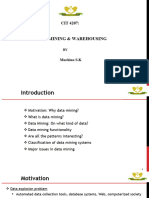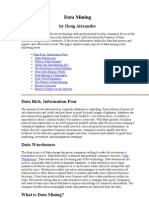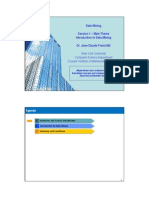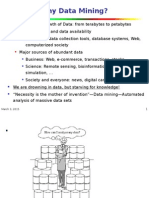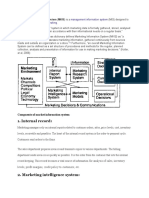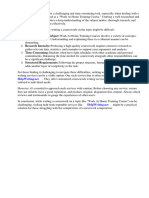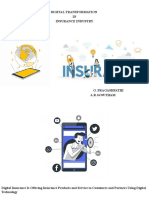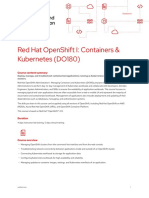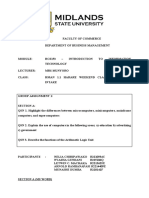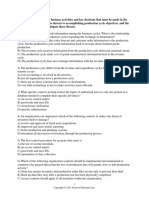0% found this document useful (0 votes)
28 views11 pagesData Mining
The document outlines the process of data mining, defining it as the extraction of knowledge from large datasets using various techniques. It discusses current trends, tools, and applications of data mining across different industries, including healthcare, finance, retail, and education. Additionally, it provides a step-by-step guide for installing the Weka data mining tool and exploring its features.
Uploaded by
Swastika beraCopyright
© © All Rights Reserved
We take content rights seriously. If you suspect this is your content, claim it here.
Available Formats
Download as PDF, TXT or read online on Scribd
0% found this document useful (0 votes)
28 views11 pagesData Mining
The document outlines the process of data mining, defining it as the extraction of knowledge from large datasets using various techniques. It discusses current trends, tools, and applications of data mining across different industries, including healthcare, finance, retail, and education. Additionally, it provides a step-by-step guide for installing the Weka data mining tool and exploring its features.
Uploaded by
Swastika beraCopyright
© © All Rights Reserved
We take content rights seriously. If you suspect this is your content, claim it here.
Available Formats
Download as PDF, TXT or read online on Scribd
/ 11













